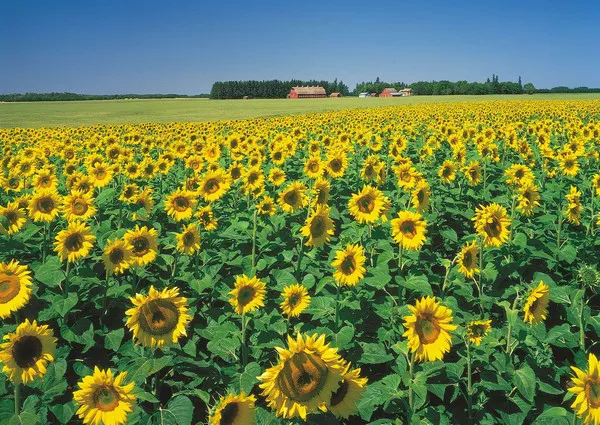Sunflowers are not only known for their bright and cheery appearance but also for their versatility as a crop. While the seeds of sunflowers are commonly harvested for various purposes including oil extraction and consumption, the stalks of sunflowers are often overlooked. However, sunflower stalks hold potential for various agricultural, industrial, and environmental applications. In this article, we will explore the diverse uses of sunflower stalks and how farmers can effectively utilize this often-underestimated resource.
1. Utilization as Biomass:
One of the primary uses of sunflower stalks is as biomass. Biomass refers to organic materials, such as plants and agricultural residues, that can be used as a source of energy through processes like combustion or conversion to biofuels. Sunflower stalks, being rich in cellulose and lignin, are a suitable feedstock for biomass energy production. Farmers can collect sunflower stalks after harvesting the seeds and use them as a renewable energy source to generate heat and electricity. Additionally, sunflower stalks can be converted into biochar through pyrolysis, a process that involves heating biomass in the absence of oxygen. Biochar has applications in soil amendment, carbon sequestration, and as a filtration medium.
2. Animal Feed:
Sunflower stalks can also serve as a valuable component of animal feed. Although not as commonly utilized as other feed sources such as hay or silage, sunflower stalks can provide nutrition to livestock, particularly ruminants like cattle and sheep. The stalks are rich in fiber, which aids in digestion, and contain some residual nutrients from the plant. Farmers can harvest sunflower stalks along with the heads and leaves and process them into a form suitable for feeding animals. Ensiling, a fermentation process similar to that used for making silage, can preserve sunflower stalks for use as feed throughout the year.
3. Soil Amendment:
In addition to their potential as a source of biomass and animal feed, sunflower stalks can be utilized to improve soil health and fertility. When incorporated into the soil as organic matter, sunflower stalks contribute to soil structure, moisture retention, and nutrient cycling. As the stalks decompose, they release nutrients such as nitrogen, phosphorus, and potassium, which are essential for plant growth. Farmers can incorporate sunflower stalks into their crop rotation practices or use them as mulch to enhance soil quality and reduce erosion. Moreover, the carbon-rich nature of sunflower stalks helps in sequestering carbon dioxide from the atmosphere, thereby mitigating climate change.
4. Industrial Applications:
Sunflower stalks possess fibrous properties that make them suitable for various industrial applications. The fibers derived from sunflower stalks can be used in the production of paper, textiles, and biocomposites. Paper made from sunflower stalk fibers is environmentally friendly and can be recycled. Similarly, sunflower stalk fibers can be blended with other natural or synthetic fibers to produce textiles with desirable properties such as strength and moisture absorption. Furthermore, sunflower stalks can be processed to extract cellulose, which serves as a raw material for the production of bio-based plastics and other bioproducts.
5. Environmental Benefits:
Beyond their direct agricultural and industrial uses, the utilization of sunflower stalks offers several environmental benefits. By incorporating sunflower stalks into agricultural practices, farmers can reduce the amount of agricultural residues left in the field after harvest, thereby decreasing the risk of wildfires and the need for open-field burning, which can contribute to air pollution. Additionally, the cultivation of sunflowers as a rotational crop can improve soil health and biodiversity by providing habitat and food for beneficial insects and microorganisms. Moreover, the substitution of fossil fuels with biomass derived from sunflower stalks can help mitigate greenhouse gas emissions and mitigate climate change.
Conclusion
In conclusion, sunflower stalks represent a valuable agricultural resource with diverse applications across various sectors. From serving as biomass for energy production to being utilized as animal feed, soil amendment, and raw material for industrial processes, sunflower stalks offer numerous opportunities for farmers to enhance their sustainability and profitability. By exploring innovative uses for sunflower stalks and integrating them into agricultural systems, farmers can contribute to environmental conservation, resource efficiency, and rural development. As awareness of the potential of sunflower stalks grows, it is essential to support research and development efforts aimed at maximizing the utilization of this versatile crop residue.


